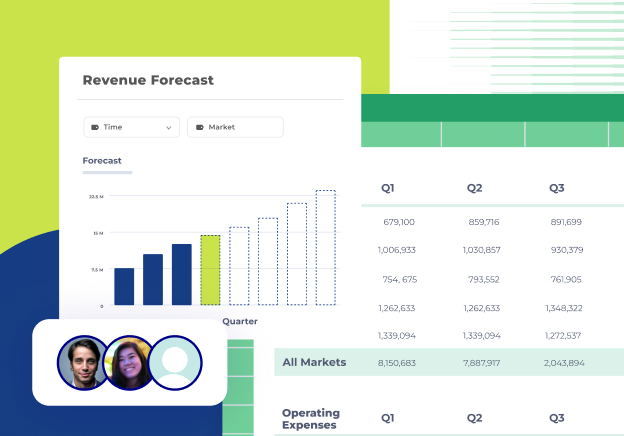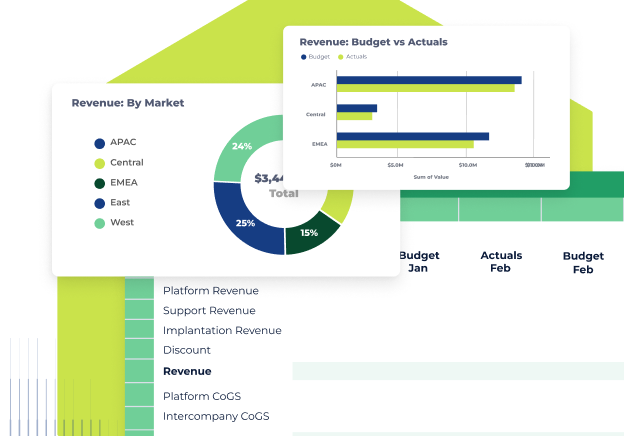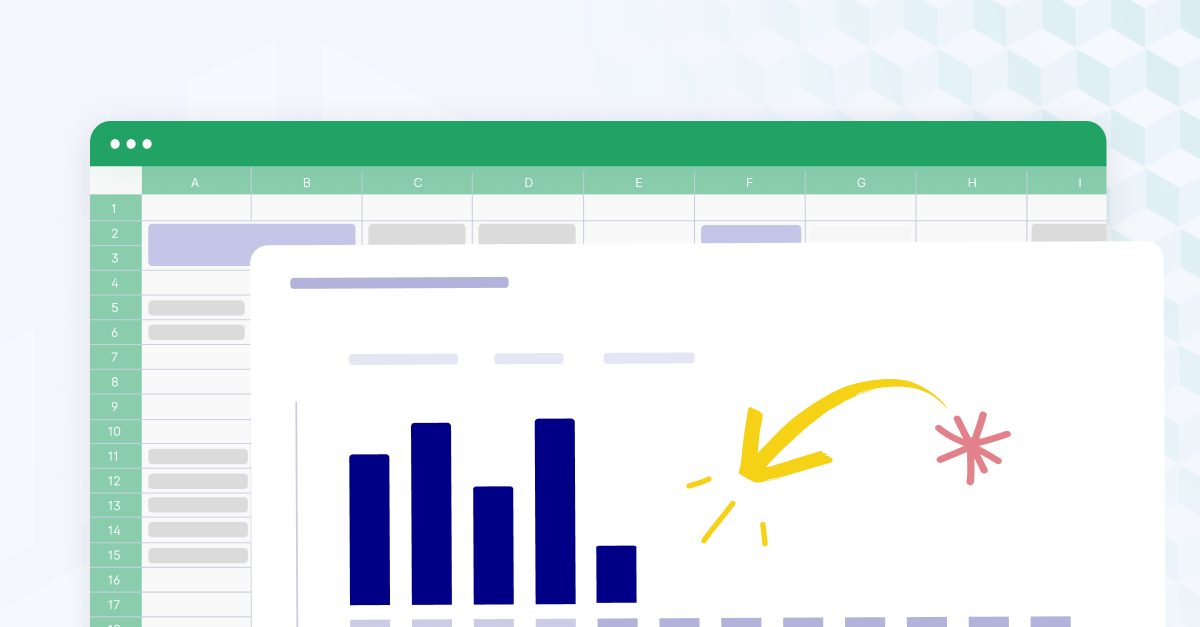What is incremental budgeting?
Incremental budgeting is when small percentage-based changes are made to the prior period’s budget information (typically from the last 12 months) rather than yearly creating an entirely new spending plan.
Incremental budgets work well for companies with stable costs and revenue (like SaaS companies) because actual performance can be used to make only a few assumptions about future spending and revenue.
Unlike other types of budgeting—like zero-based budgeting, for example—the incremental budgeting method only considers changes from one budget period to the next. It doesn't necessarily reflect long-term goals or strategies.
So incremental budgeting doesn’t work for every business. But it might be best for you depending on your industry and business model.
Why do companies use incremental budgets?
Traditional budgeting is an in-depth budgeting process conducted annually.
FP&A uses the previous year's performance and projected income, expenses, and goals to set budgets for every department or project. It’s a valuable tool for cost containment, but it’s time-consuming.
Zero-based budgeting may not be necessary for businesses with stable cost drivers, expenses, and outputs.
The incremental budget model is straightforward.
Begin with your previous period budget lines and adjust them by incremental amounts (up or down) based on your performance.
It’s an easy way to quickly create a plan for the year.
Incremental budgeting pros and cons
What are the advantages of incremental budgeting?
Established businesses with predictable spending (who want more of the same in future periods) choose incremental budgeting for its simplicity and ease of use. Incremental budgeting pros include:
Ease of preparation: If you have actual performance data from previous budgets, you’ve got everything you need to prepare your new budgeting process quickly and easily. This is why the simplicity incremental budgeting is useful for small business owners who do their accounting.
Ease of use: You don’t need to be a CPA to create an incremental budget update—or to understand one. Incremental budgeting is a clear-cut style of planning spend and keeping track of your progress through the year.
Cost-effectiveness: If you’re using an accountant for your budget preparation, one of the advantages of an incremental budget is that it will take less time and be less expensive than another method. This keeps overhead costs down while maintaining a clear plan for the year.
Are there any drawbacks to incremental budgeting?
Is incremental budgeting right for every business? Like everything in finance: it depends.
It doesn’t take into account external factors or changes in the business. You might look to other methods if:
- Your cost drivers change considerably over time
- You work in a high-volatility industry
- You’re trying to cut costs or increase efficiency
There are other issues to consider before deciding on the incremental budgeting method:
Perpetuating inefficiency: Incremental budgeting is built on the assumption that your previous period's numbers were solid. However, the current period's new budget will continue to support those activities if departments practice unnecessary spending (for instance, buying overpriced supplies or maintaining unused software contracts on auto-renewal).
Creating budgetary slack: Department performance is often measured (at least partly) by budget performance. With an incremental budget system, a budget pool might give the team more money than they need and create the impression that the team “always comes in under budget.” This stealth inefficiency reduces cash optimization. Since the budget is always based on previous data, budget inflation may persist for years.
Ignores external impacts: Inflation, supply chain cost, and employment market changes significantly impact your spending. But straightforward incremental budgets don’t account for these external forces.
Limits future change: As the saying goes, “What got you here won’t get you there.” Businesses intent on growth and expansion may not benefit from incremental budgeting because the process is built around stability. If you are developing new products, expanding the business, or changing your business model, you may consider using a more flexible approach to plan for those big moves.

Incremental budgeting examples
Incremental budgeting works for a variety of business strategy use cases. As one of the most commonly used approaches to budgeting, here are a few common examples many companies use the budgeting technique for:
-
Salary Increases. If a company typically gives salary increases around the same percentage each year, an incremental budget would factor in this expected increase in salaries from the previous year or period.
-
Marketing Budget. While it typically makes sense to compare marketing budgets to the year or period prior it makes sense to allocate a certain percentage increase to account for inflation or expected new initiatives.
-
Employee Benefits. Factoring in premium increases on health insurance or changes to retirement contribution plans into benefits planning makes employee benefits a great incremental budgeting example.
Which budgeting method should I consider?
There are two major incremental budgeting methods: top-down and bottom-up.
In the top-down budgeting approach, senior management makes decisions on the budget and hands down those expectations to the department leads. These assumptions are based on past performance, the current period's budget, and future goals of the organization.
Conversely, in a bottom-up budgeting approach, department managers build a recommended budget based on their strategic goals for the year. They hand their budget assessment to senior management for approval and implementation.
In both budgeting techniques, the company uses past performance and current budget data to make reasonable guesses about future spending and performance.
Four methods to budget for your business
There are four main methods of budgeting companies use to plan their spending. Each offers different advantages and disadvantages. Your chosen method depends on your business's complexity, planning needs, and desired outcomes.
- Incremental budgeting is covered in this article. It’s great for companies seeking stability in their expenses and to avoid unnecessary spending.
- Activities-based budgeting is a top-down budgeting process in which resources are allocated based on the activities that need to be completed, considering the cost of materials, labor, and other expenses associated with each activity. It’s used for streamlining costs by analyzing each action a company takes.
- Value proposition budgeting is a method in which companies analyze the cost versus benefit to identify which activities provide the most value and where resources should be allocated. It’s useful when companies want to optimize their customers' offerings and create more business value.
- Zero-based budgeting uses a bottom-up method where all expenses must be justified for each new budget period. In zero-based budgeting every expense is analyzed and allocated based on its contribution to the organization's objectives.
How do you create an incremental budget?
If you’ve decided that incremental budgeting process is the way to go, use these three steps to get your incremental budget right the first time:
1. Collect your actuals from the previous 12 months
If you haven’t used these budgeting methods in the past, start by collecting data on the last year of business. Make sure to include a complete list of costs:
Fixed costs: Rent, wages, utilities, tax payments, loan repayments, software licenses, business licenses, and other predictable, recurring costs.
Variable expenses: Consultant fees, variable bills (like mileage or transportation costs), bonuses, overhead expenses, and other fluctuating categories.
Put each line item into a spreadsheet or template, broken out by month, and totaled in an end column.
2. Make adjustments based on previous budgets, data, and assumptions
With your actuals collected and categorized, begin adjusting your previous budget actuals based on what you know will change or assume might change.
For instance, if inflation drives up the cost of certain items, adjust your current year's budget based on that knowledge.
If you want to conduct more marketing in the coming year, include the increase in your future budget.
3. Track changes over the year
Just because you build your budget annually doesn’t mean it’s “set it and forget it.” Tracking changes in a static budget throughout the year allows you to compare actuals against budgeted expectations.
This helps identify areas where costs have increased or decreased, areas of overspending, and any other discrepancies that may have occurred.
Regularly comparing the new budget and actuals will help you understand trends in spending over time to make informed decisions about resource allocation.
Incremental budgeting also helps you refine your assumptions and inform the percentage adjustments you’ll make the following year.
Using software for incremental budgeting
Of course, standing up an incremental budgeting process doesn't have be done all manually.
Like most budgeting techniques, FP&A teams can use software solutions to accelerate the process and strategy behind incremental budgeting.
For example, Cube's scenario capabilities allows teams to create multiple passes of their budgets and provides visibility and transparency into how their budgets change over time.
Instead of managing a new file for each new scenario you need to run, Cube manages those scenarios efficiently for you.
Cube also features the ability to lock down prior scenarios so you never have to worry about someone overwriting that last budget iteration again.
While incremental budgeting is one of the simpler budgeting techniques, using tools to automate certain processes and collaborate with stakeholders more easily pays dividends over time.
Conclusion
Now you know all about incremental budgeting.
What it is, how to do it, and whether it fits your business best.
...but pulling your actuals into a model to begin your budgeting process can be difficult. And that's where Cube comes in.
Cube integrates with and organizes your historical data and makes it easy to pull into Excel (and Google Sheets, to share the budget with department leaders).
So you never need to worry about whether your numbers are accurate or how to get data from one place to another. Cube handles it all for you.
And that's just the tip of the iceberg.
Sound interesting?
Click the image below to request a free demo and learn more about Cube.



.png)









.png)




.webp)
.webp)
.png)